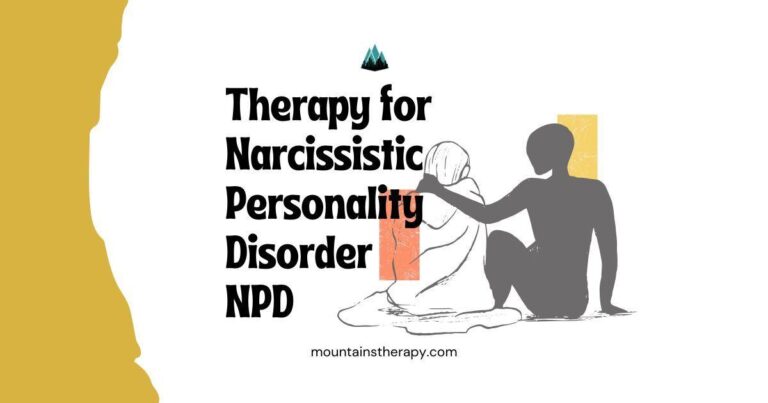When it comes to treating Narcissistic Personality Disorder (NPD), choosing the right therapeutic approach can significantly influence the journey toward healing and self-awareness. Among the myriad of psychotherapeutic options, Cognitive Behavioral Therapy (CBT) and Psychodynamic Therapy stand out as two prominent methods, each with distinct philosophies and techniques. In this article, we’ll explore how these approaches address the complex patterns of NPD, comparing their goals, processes, and potential outcomes. Whether you’re a mental health professional, a student, or someone seeking insight into therapy options, understanding the nuances of CBT and Psychodynamic Therapy can provide valuable clarity on navigating treatment for narcissistic traits.
Table of Contents
- Understanding the Core Principles of CBT and Psychodynamic Therapy for Narcissistic Personality Disorder
- Comparing Effectiveness in Addressing Emotional Regulation and Interpersonal Challenges
- Tailoring Treatment Plans: When to Choose CBT or Psychodynamic Approaches
- Practical Recommendations for Clinicians Working with NPD Patients
- In Conclusion
Understanding the Core Principles of CBT and Psychodynamic Therapy for Narcissistic Personality Disorder
Cognitive Behavioral Therapy (CBT) and Psychodynamic Therapy offer distinct but complementary pathways for addressing Narcissistic Personality Disorder (NPD). CBT primarily focuses on identifying and challenging distorted thought patterns that fuel narcissistic behaviors, such as grandiosity and entitlement. Through structured interventions, individuals learn to recognize automatic negative thoughts and cognitive distortions that perpetuate their maladaptive self-image. Techniques such as cognitive restructuring and behavioral experiments empower clients to develop healthier perspectives and improve interpersonal functioning. The pragmatic, goal-driven nature of CBT aligns well with patients seeking concrete strategies to modify problematic behaviors and improve emotional regulation.
In contrast, Psychodynamic Therapy delves into the unconscious roots of narcissistic traits by exploring early relational experiences and unresolved conflicts. This approach emphasizes the importance of understanding underlying emotional wounds, defense mechanisms, and internalized object relations that shape the self-concept. Through the therapeutic alliance, patients gradually become aware of their vulnerabilities and dependency needs previously masked by grandiosity. Key elements include:
- Exploring attachment patterns and early childhood dynamics
- Uncovering unconscious motives and desires
- Processing feelings of shame and abandonment
By fostering insight and emotional depth, Psychodynamic Therapy aims to restructure the self from a more integrated and authentic place, offering profound, long-lasting change.
Comparing Effectiveness in Addressing Emotional Regulation and Interpersonal Challenges
Both Cognitive Behavioral Therapy (CBT) and psychodynamic therapy offer distinct mechanisms for helping individuals with Narcissistic Personality Disorder (NPD) navigate the complexities of emotional regulation. CBT’s structured approach actively targets maladaptive thought patterns, enabling clients to identify and reframe distorted beliefs that fuel emotional dysregulation. Techniques such as mindfulness and emotion-labeling are employed to enhance self-awareness and provide practical tools for managing intense feelings in real-time. This focus on skills development often results in quicker, more tangible improvements in controlling impulsive emotional reactions.
In contrast, psychodynamic therapy delves deeper into the unconscious conflicts and relational histories shaping an individual’s emotional and interpersonal difficulties. Through the therapeutic relationship, clients gain insight into the origins of their defensive behaviors and emotional turmoil. This reflective process often uncovers the roots of interpersonal challenges, fostering a more profound and lasting transformation in how clients connect with others. Key benefits include:
- Increased emotional insight into underlying vulnerabilities
- Enhanced capacity for empathy within relationships
- Better tolerance of emotional complexity and ambivalence
Ultimately, the choice between these approaches may hinge on whether immediate coping strategies or deeper relational work aligns better with the client’s needs and therapeutic goals.
Tailoring Treatment Plans: When to Choose CBT or Psychodynamic Approaches
When deciding between Cognitive Behavioral Therapy (CBT) and psychodynamic approaches for treating Narcissistic Personality Disorder (NPD), it is crucial to consider the individual’s specific needs and symptom presentation. CBT is often favored for clients who seek practical tools to manage their thoughts and behaviors. This method encourages recognizing and restructuring distorted thinking patterns, which can lead to increased emotional regulation and healthier interpersonal interactions. Clients who benefit from clear, goal-oriented strategies and immediate symptom relief often find CBT particularly effective.
Conversely, psychodynamic therapy delves deeper into the unconscious motivations behind narcissistic traits, aiming to uncover and address early relational patterns and unresolved conflicts. It is especially useful for individuals ready to embark on a more introspective journey, exploring the root causes of their self-esteem issues and vulnerabilities. When tailoring treatment plans, therapists should weigh factors like:
- Client’s readiness for introspection versus preference for structured guidance
- Severity and chronicity of symptoms
- Therapeutic goals—behavioral change or emotional insight
- Availability of therapeutic support and duration of treatment
Ultimately, integrating elements from both approaches can create a flexible, personalized plan that addresses both immediate symptoms and long-term personality restructuring.
Practical Recommendations for Clinicians Working with NPD Patients
When working with individuals diagnosed with Narcissistic Personality Disorder, clinicians must balance empathy with firm boundaries. Establishing a strong therapeutic alliance is critical, as patients often exhibit mistrust or defensiveness. Practitioners are encouraged to validate the patient’s feelings without reinforcing maladaptive narcissistic behaviors. Consistent structure, clear expectations, and gentle confrontation can help mitigate tendencies toward entitlement or manipulation. Regular self-reflection and supervision are invaluable supports for therapists to navigate the complex emotional dynamics that arise during sessions.
In practice, maintaining flexibility in intervention strategies is essential. Techniques from both CBT and psychodynamic approaches can be integrated to enhance patient engagement. For example, clinicians might use CBT to focus on cognitive restructuring and behavioral experiments that challenge grandiose self-perceptions, while psychodynamic dialogue can explore underlying vulnerabilities and relational patterns driving narcissistic defenses. Key recommendations include:
- Prioritize building trust before encouraging deep self-exploration.
- Use motivational interviewing to resolve ambivalence toward change.
- Encourage emotional awareness gradually to avoid overwhelming resistance.
- Set boundaries firmly yet empathetically to prevent exploitation.
In Conclusion
In the journey to understand and effectively treat Narcissistic Personality Disorder, both Cognitive Behavioral Therapy and Psychodynamic Therapy offer valuable perspectives and tools. While CBT provides structured strategies to challenge and reshape maladaptive thought patterns, psychodynamic approaches delve into the deeper emotional roots shaping narcissistic behaviors. Ultimately, the choice between these therapeutic modalities should be tailored to the individual’s unique history, needs, and treatment goals. By fostering a collaborative therapeutic alliance and integrating insights from both approaches when appropriate, mental health professionals can offer more nuanced and effective care for those navigating the complexities of NPD.

